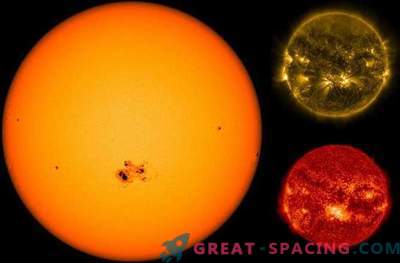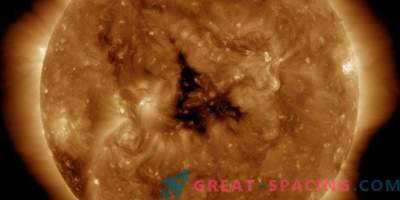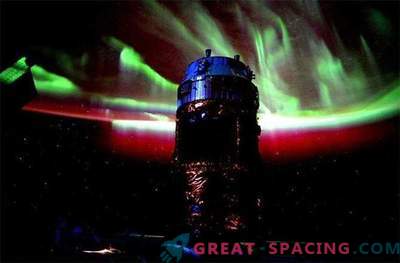
In recent years, something strange is happening on the Red Planet, something that is puzzling scientists.
A few cases of strange “plumes” were observed in the upper atmosphere of Mars. In 2012, this phenomenon was noticed by amateur astronomers and persisted for several days. Even the Hubble Space Telescope witnessed several jets.
At first it was assumed that this was some form of high-altitude clouds or perhaps a dust storm threw dust into the upper layers of the atmosphere. But each hypothesis had its flaws, and the planetologists remained confused.
At present, scientists from the European Space Agency, who lead the Mars Express mission, are studying this Martian oddity and have found some pretty strong evidence that the plumes are not formed by the weather of the planet, but are caused by the space weather.
The interaction between the Sun and the planetary environment is well known. So highly charged particles from the solar wind collide with the global magnetic field of the Earth, fall into the trap of the magnetosphere and are transferred to high latitudes. This influx of ions of sunlight collides with high-altitude atmospheric gases, causing them to glow. Where there is a magnetic field and atmosphere, the Sun can form a dazzling light show, so we can observe auroras on Jupiter, Saturn and even Venus. But solar interactions are not limited to the aurora. When the Earth encounters coronal mass ejections (bubbles of magnetized plasma emitted from the lower atmosphere of the Sun), the magnetic field of the planet can feel its effects, forming powerful electric currents through the atmosphere and feeding our ionosphere.
However, Mars does not have a global magnetic field. When coronal mass ejections hit the Earth, the magnetosphere protects the atmosphere, but Mars lacks this magnetic shield, so the Red Planet suffers from atmospheric erosion. Although, according to astronomers, the atmosphere of Mars has been quite thick over billions of years, a constant stream of particles of the solar wind breaks it. The atmosphere of Mars literally seeps into space.
If space weather has such a strong effect on the atmosphere of Mars, it could be the culprit of strange plumes.
In 2012, strange atmospheric phenomena were observed on Mars, and Mars Express collected data from the local space environment.
"Our plasma observations indicate that intense phenomena occurred in space weather at that time, large enough to affect Mars and increase plasma leakage from the planet's atmosphere," said David Andrews from the Swedish Institute of Space Physics.
There is indirect evidence that the Mars ionosphere (the upper layer of the atmosphere filled with charged particles or ions) is influenced by space weather phenomena, such as coronal mass ejections. Scientists are currently studying archival data in the hope of finding instances when jets occurred during coronal mass ejections. For example, in 1997, a jet on Mars was noticed by Hubble at the same time when emissions of the coronal mass were recorded on Earth. Unfortunately, at that time scientists had no opportunity to fix the impact of emissions on the atmosphere of the Red Planet.
"It is still not clear, due to what laws of physics this phenomenon occurs, but judging by the height of the lights, we believe that plasma interactions play an important role," said Andrews. "There is an assumption that fast moving coronal mass ejections create significant disturbances in the ionosphere. As a result, dust and ice particles at high altitudes in the upper atmosphere collide with plasma forces of the ionosphere and magnetic fields, and then move even higher with an electric charge ".
“This,” Andrews agrees, “can produce obvious fire flashes that can be seen from Earth. This is basically atmospheric damage created by coronal mass ejections. Although, as is a good secret, more information is needed to solve it but it seems that we are finally close to a possible explanation for these strange Martian flashes. "











































